Peru is a great budget destination, and we were able to travel around for over a month and spend on average only $30 per day! Peru has some of the most jaw-dropping scenery, an incredibly well-preserved culture, and a history that will just blow you away. My boyfriend and I chose to largely stay within the Sacred Valley while traveling, and spent a total of 37 days in this gorgeous country. Here's the scoop on how we traveled throughout Peru for very cheap: we each spent only $1,100 in total.
Introduction
After Ramone and I finished up our full travel month in Chile, we made our way up north to Peru. We had already reserved a one-month Workaway gig in Ollantaytambo at the ChocoMuseo.
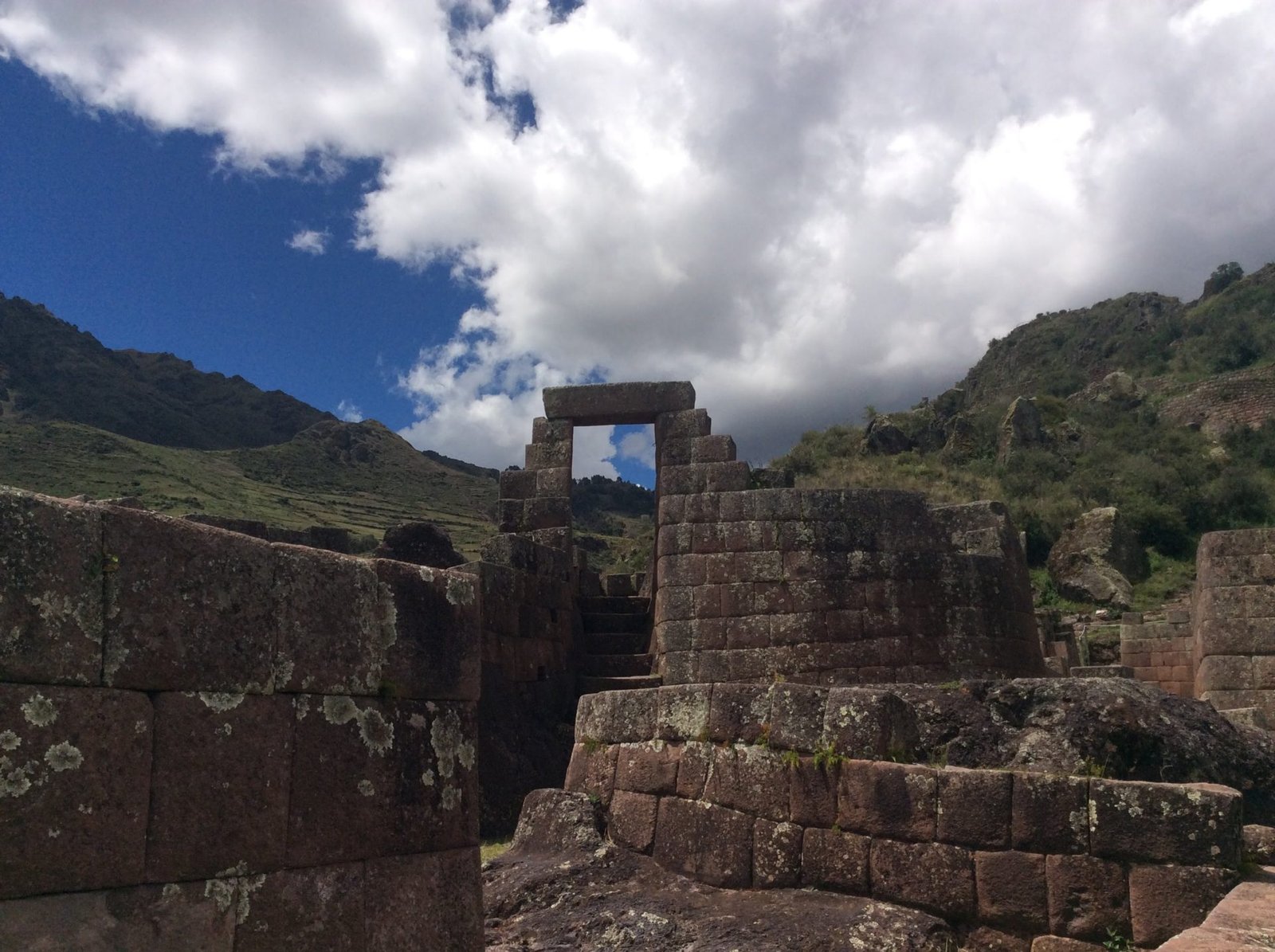
Incan ruins in Pisac, Peru on a cloudy day
In Peru we were able to check out Arequipa, the Sacred Valley (Cusco, Ollantaytambo, Urubamba, Pisac, Lares & more) and Lima. Peru’s a large country, so we had to choose a few places we wanted to explore, and leave out the rest for another adventure back!
Our Priorities in Peru
Our Itinerary
We really settled down in the Sacred Valley of Peru, andchose to skip the Amazon Rainforest, other coastal cities, and the northern part of Peru -- but have plans to go back to check out what we weren't able to see.
Arequipa: 3 days
Ollantaytambo/surrounding Sacred Valley: 1 month
Lima: 4 days
Our Budget
How Much We Spent for over 1 Month: ~$1,100 per person (including everything, including travel from Chile, except the flight back to the states)
Cost of living is cheap in Peru, and since we weren't paying for lodging for most of the time we were there, this saved us a lot of money. The main costs we incurred were paying for entry fees, splurging on unnecessary (but kind of necessary) drinks, and transportation. Also, ATM fees are outrageous in parts of Peru (both from the ATM and from my bank). Two times I was charged $20 for an ATM fee from my bank! While I was there I didn't have a Schwab checking account, but now I do and would recommend looking into it. They don't charge any ATM fees anywhere in the world, and even reimburse you for any fees that the ATM charges you. They don't charge an exchange rate either (although neither does Capital One or most travel credit cards).

The Sacred Valley brewery in Peru
The currency in Peru is measured in soles. While we were there, the exchange rate was roughly 3 soles for $1.00.
Basic Costs in Peru
How We Saved Money
Budgeting is important while you're traveling for a longer period of time. Here's how we saved our money and budgeted while in Peru.
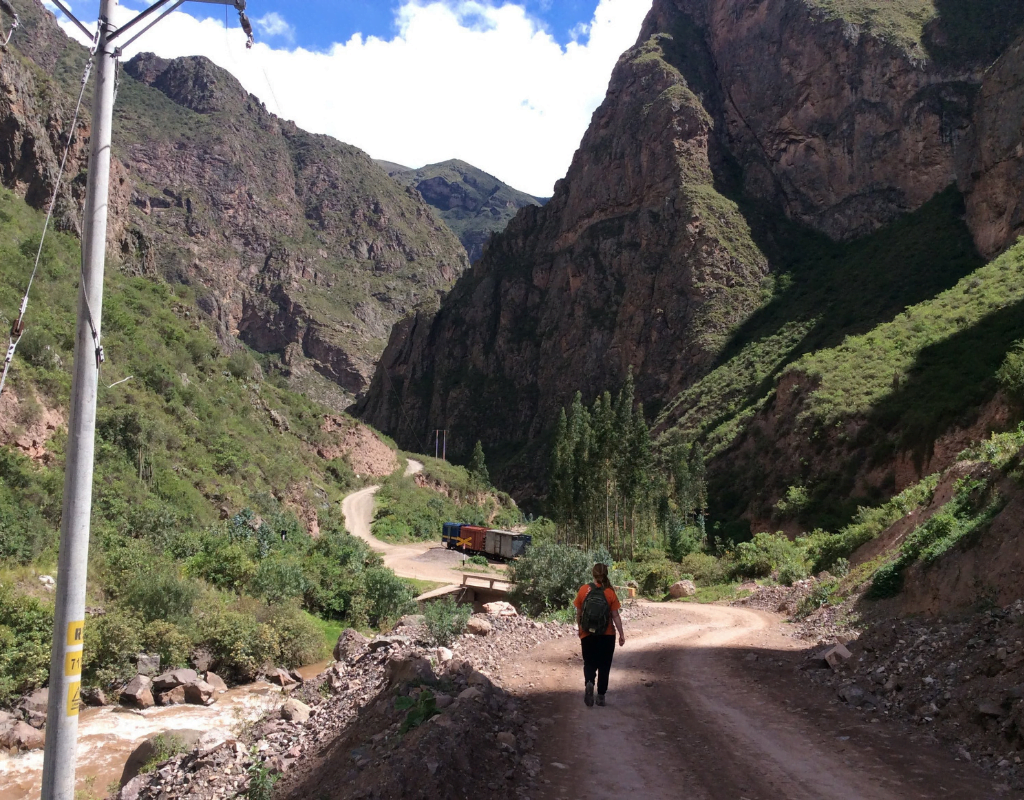
Getting to Peru From Chile
We came to Peru from Chile. If you're flying into Peru, then you'll most likely fly into Lima and either take a bus or a domestic flight to your next location.
Here's our transportation budget breakdown, included in our budget costs:
Total Cost of Transportation: $53
Not too shabby for the crazy distance from San Pedro to Arequipa. But it came with a price. This travel night/day was by far the worst one.
The Long Haul: Still in Chile
We were in San Pedro de Atacama and from there we had to take an overnight bus to Arica, Chile, the Chilean border city to Peru.
The bus was late. We didn’t plan ahead, so we had to buy from TurBus, a bus company that I am not a fan of. Tickets were pricier than we expected (because it’s TurBus goddammit), and then the bus was late. We waited and waited and it finally showed up and ushered us all on.
We pulled into Arica and I was running on maybe an hour of sleep. We decided to quickly cross the border rather than sticking around in Arica for the day, and hopped into a colectivo (shared taxi) with a Chilean couple and a man from Indonesia named Darwin who we ended up traveling the whole way to Arequipa with.
The colectivo was a short ride over the border to the city of Tacna; we had to stop, get out, and go through customs, then get back in and then drive a little bit longer to Tacna.
Arriving in Peru: Quick Stop in Tacna
It was around 5:00 a.m. in Peru when we arrived (they don’t celebrate daylight savings, so they weren’t in the same time zone as Chile). The sun was a’blazing and people were out and about like it was 9:00 a.m. It was surreal. I felt like I was in an alternative reality.
We arrived in Tacna and decided to just keep going, so we immediately grabbed the next bus to Arequipa. Oof, little did we know that that bus ride was going to be a roller coaster ride through the mountains.
We waited around an hour for the bus and grabbed some coffee and bread with avocado. The Peruvians all around us were eating soup (later learned this was caldo de gallina). We also exchanged Chilean pesos for Peruvian soles – it looks a little weird, but in the bus station there were just people sitting at fold-down tables exchanging money. Every city/country does things differently when it comes to exchanging money.
There was a lot of security in Tacna. Never before did we have to go through security to get on a bus, but here we did. Metal detectors and all.
The Joy Ride Through the Mountains
We boarded and were on our way. I was feeling sleep-deprived but not tired, if that makes any sense. American movies that were dubbed over were playing on the bus. Darwin, Ramone and I were the only foreigners in sight.
The bus kept stopping and police kept searching everyone’s luggage. They’d come on and ask us if we brought any fruit (no). Apparently they were dealing with a major fruit fly epidemic and didn’t want any contamination happening in other regions.
We saw the landscape gradually transform from desert with little shanty houses dotted throughout the landscape to more and more mountainous terrain. There were a few oases throughout, just appearing out of the middle of nowhere, a short strip of greenery surrounding a trickling river.
And then we passed the overturned truck on the road and I realized maybe this is why there are no foreigners on this bus. Thankfully, we made it to Arequipa at around 5:00 p.m. safe and sound.
I would not recommend doing this trip from San Pedro all the way to Arequipa non-stop. I would recommend the bus ride from Tacna to Arequipa because the scenery was breathtaking and it was such a good portrait of Peru. But take a break for a night, perhaps in Arica, Chile or Tacna, Peru and then head to Arequipa the next day (that is, if you’re coming from Chile. If you’re arriving via Lima, this wouldn’t make any sense).
Arequipa: The Surprise City


I knew nothing about Arequipa. We decided to stay there for a couple of nights because, why not? This turned into one of our best ideas on the trip because Arequipa is very underrated and awesome.
The downtown plaza area is cute, and there are plenty of touristy restaurants around the plaza. We decided to finally, after avoiding these types of restaurants, try some cuisine from a restaurant overlooking the plaza. I got some quinoa-crusted bass and was pleasantly surprised.
I fussed at first because I didn’t want us cashing out, but really “cashing out” was the equivalent of $10 a dish. That’s a regular old meal back in the states.
The best food we had all trip was in Arequipa. There are tons and tons of small local restaurants serving up 3-courses meals for 6 soles (about $2). Don’t avoid these because you think that there’s a “reason” they’re cheap – they’re delicious and authentic.

My fondest memory there is the monastery that’s located in Arequipa. Admission is a couple bucks and the monastery is literally it’s own city within the city. It’s definitely worth the visit. Tour guides are also cheap and offer tours in English and Spanish, but we opted out and there were plenty of placards explaining information for us.
Arequipa is normally the home base for people that are traveling to Colca Canyon, which isn’t far. We thought about it, and actually talked to a tour agency, but decided against it since we weren’t spending a long time there and would rather relax. We decided to just walk around and check out the miradoresand eat homemade ice cream.
Ollantaytambo: Home Base
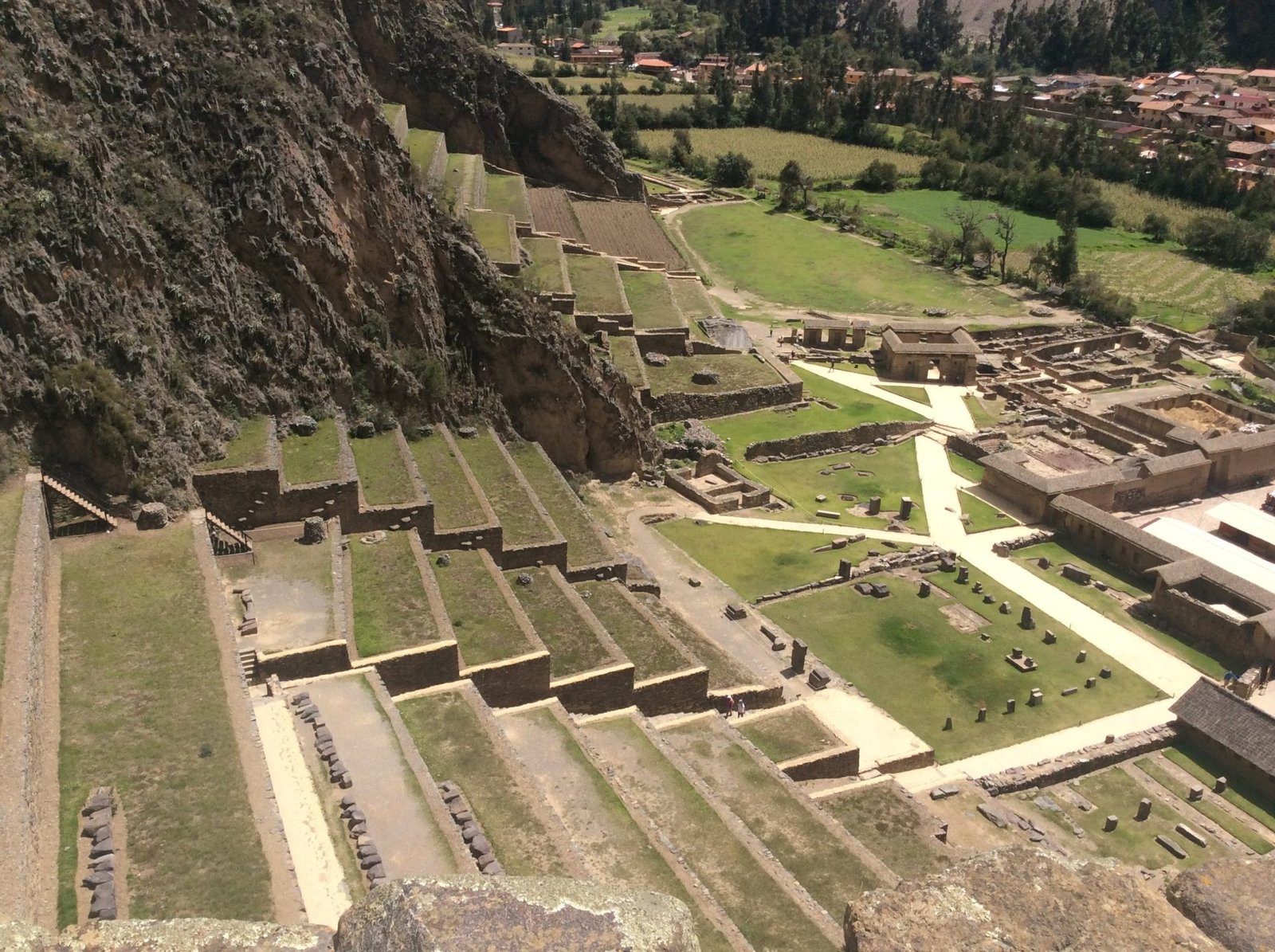
Transportation costs to Ollantaytambo:
We took another long bus through the mountains to get to Cusco, and then a van to get to Ollantaytambo. This one I managed to not freak out on, so all was well.
Many people take the train in the Sacred Valley, but it's absurdly expensive. So if you want to get to Ollantaytambo, a colectivo van is the best way to go. You usually have to make a quick stop at the bus station in Urubamba; sometimes you transfer vans, sometimes you don't. All the drivers are friendly and will let you know where to go. They also never tried to charge extra money from us (although once we did hail a bus that was a private bus and they did try to charge us extra).
Since we were already accustomed to being at pretty high altitudes at that point, Cusco wasn’t a shock. But for many tourists, you have to allow for a few days to adjust to the altitude if you’re coming from Lima.
We were meeting Mari, the manager of Choco Museo Ollantaytambo, at our new volunteer job, so we took a quick van over from Cusco to Ollantay and settled down in our home for the next month.
We made Ollantay our home base, volunteering at the Choco Museo for 4 hours a day, 5 days a week, and then exploring nearby areas on our time off. Ollantaytambo is an excellent place to stay at; most people choose Cusco, but there are multiple free day hikes that are easily accessible from Ollantaytambo. It’s a small town, and the only Incan–built town that’s still inhabited.
We were able to check out a bunch of free hikes; hiking up to the quarries and the Incan Sun Gate; going to Pumamarca; checking out a nearby "iglesia" (more like an old Incan temple); and the short hike up to Pinkuylluna.
Read my introduction to Ollantaytambo post here
The Last Week: The Boleto Turístico

After we finished up our month of working, we bought the boleto turístico that includes entry to a bunch of different ruins and museums in the surrounding area.
We still had a few days left at our place in Ollantaytambo, so while we were there we made day trips to check out Pisac and Maras/Moray + Salineras, ruins that were included in the boleto turístico (although salineras wasn't).
We then packed up our stuff and went back to Cusco, where we stayed there for another three days and checked out the three ruins nearby, as well as some of the museums that are included in the ticket.
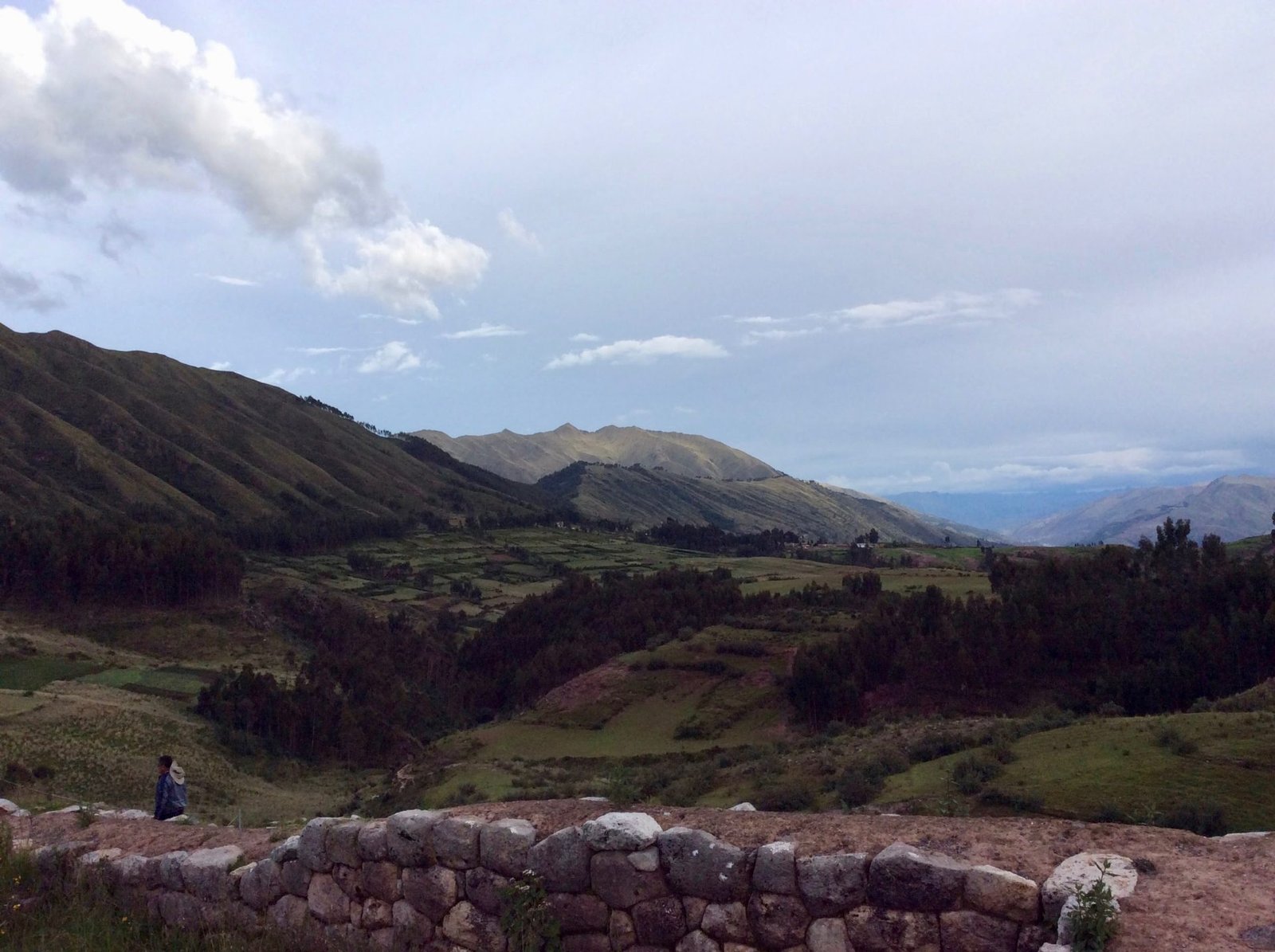
Views from Cusco, Peru
Honestly, the museums really aren't worth it. They're quite small but do have some interesting artifacts to look it. It helps if you know Spanish, because the English conjugations are not that great. But if you want to add on an extra bonus that's incredibly worth it, check out Qorikancha.
Qorikancha used to be the Incan Sun Temple, but when the conquistadores came in they of course just built a Church on top of it. It's 8 soles for student admission and slightly more if you're not a student. The architecture is stunning and bizarre: they left the old Incan walls and then just build on new parts of the Church.
Extended Reading: Relaxing Day Trips in the Sacred Valley of Peru
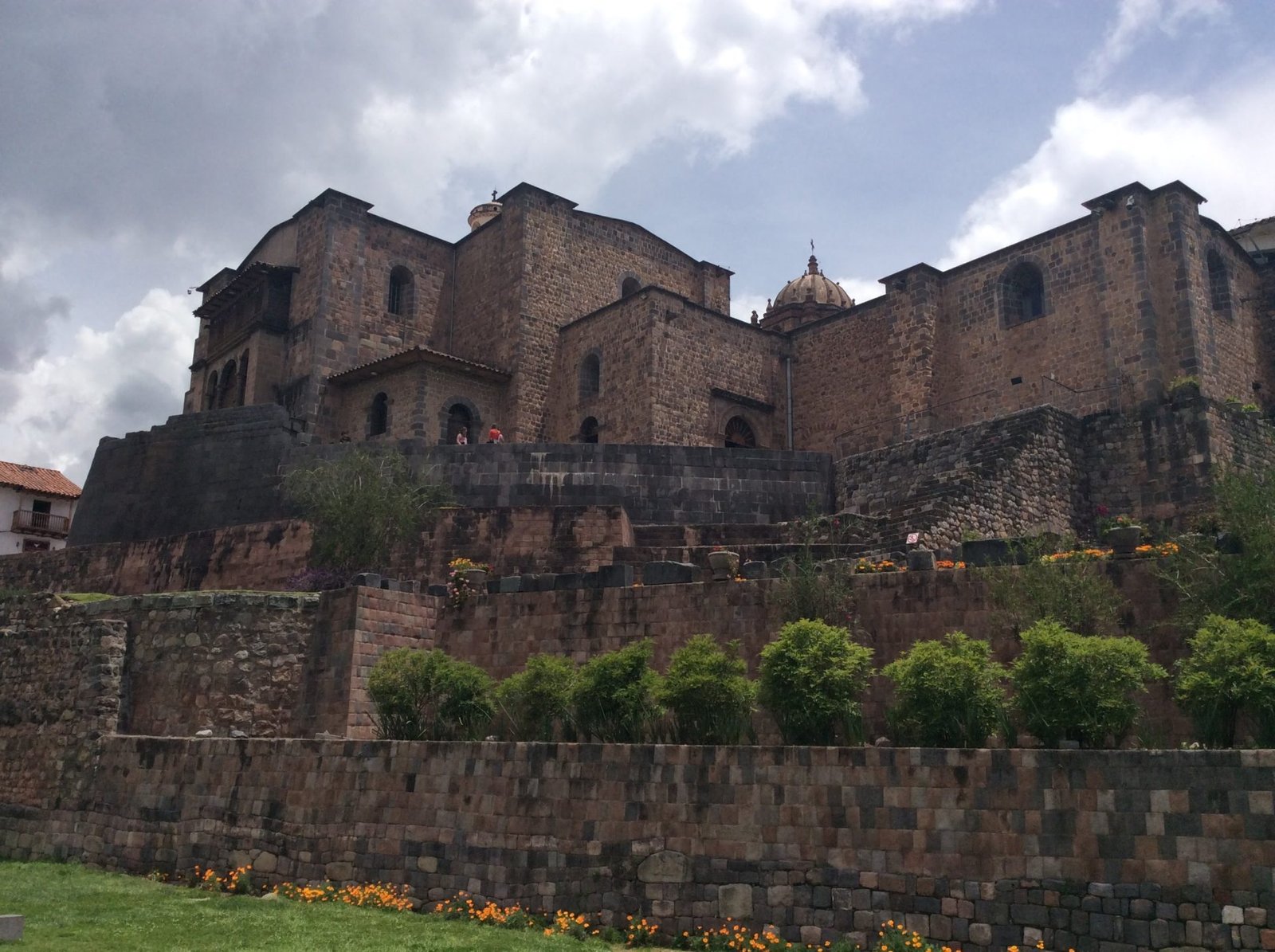
The exterior of Qorikancha
Last Stop: Lima
Transportation Costs to Lima:

Ocean views in Lima, Peru
We decided to fly to Lima. The bus ride is long, and traverses one of the most dangerous roads in Peru. After our long, long bus rides that we took to get to the Sacred Valley, we took a short flight to the coastal capital of Lima.
Lima was pretty much what we suspected: hot, humid, lots of people, cool beaches and excellent cuisine.
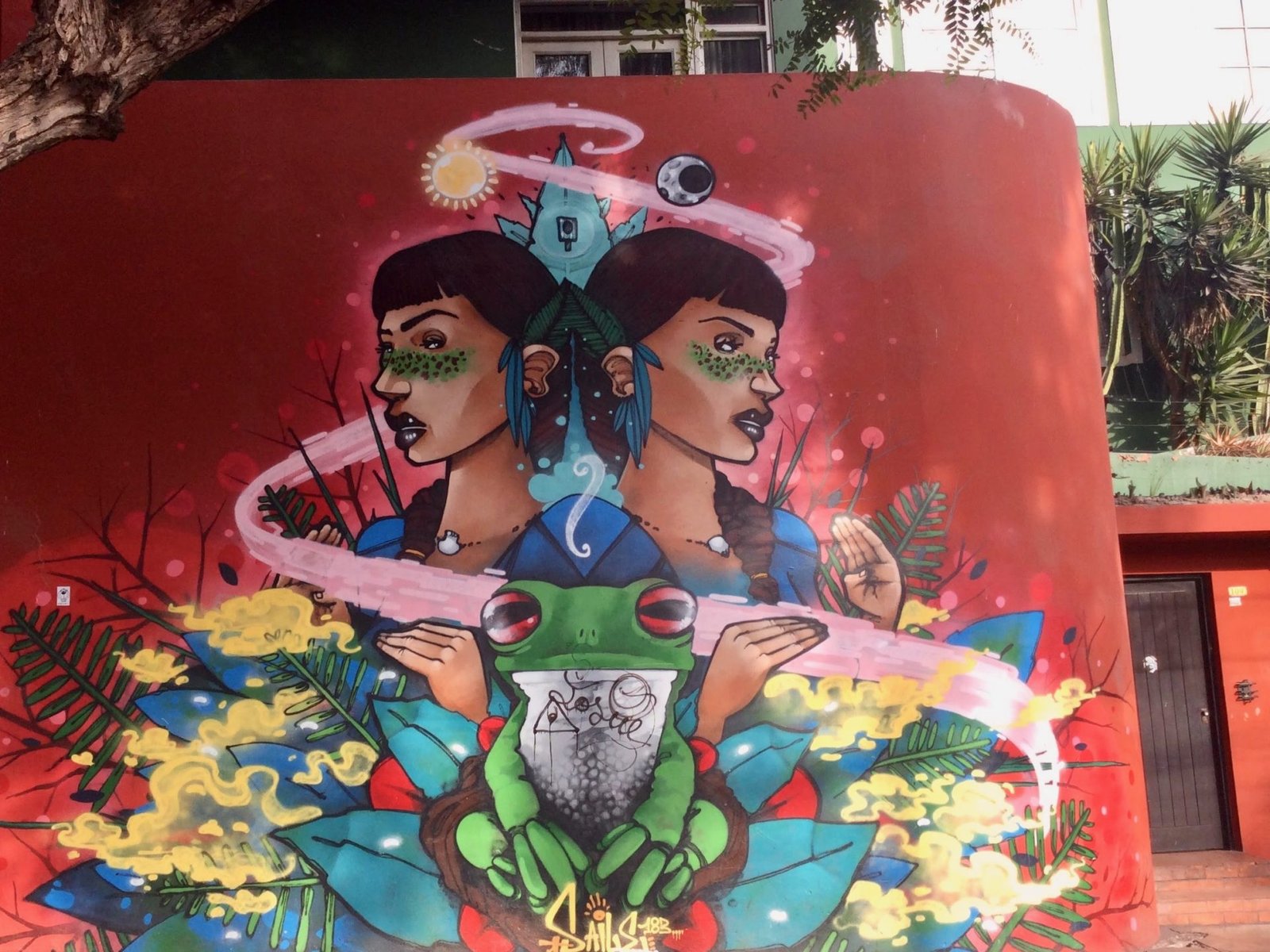
Street art in the Barranco neighborhood of Lima, Peru
We stayed at a hostel in the Miraflores neighborhood, took the metro to check out the downtown area, checked out the artsy Barranco neighborhood and chilled at the beach (although we didn’t take surfing lessons).
Final Thoughts on Peru

We only scraped the surface of what Peru can offer. There's so much to do here, and although some of the areas where tourists flock are pricier, the general cost of living in Peru is very cheap. Make sure you frequent local spots and support local businesses.
Of course, if you're paying for lodging throughout the month expect to budget more than what we did. However, there are other ways to save money that we didn't focus on (like booze, for example).
Read Next: An Overview of Peru
Liked this post? Pin it!



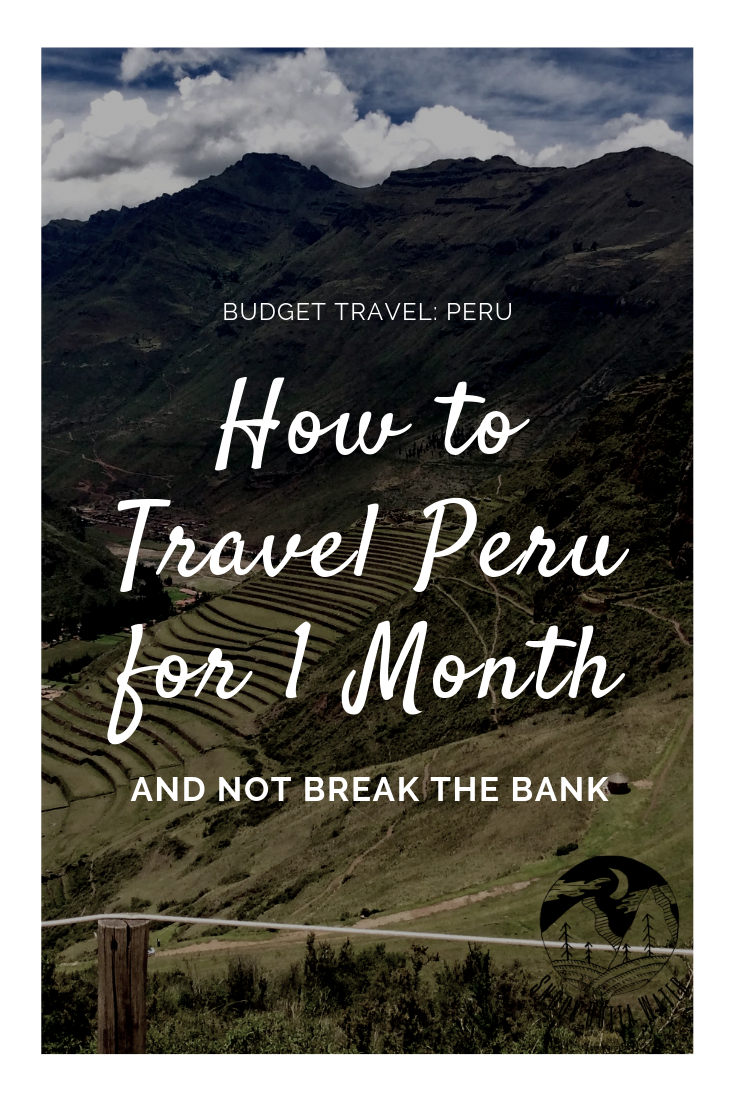
Subscribe to receive Snook Outta Water's monthly newsletter with exclusive updates and content.

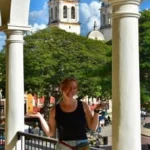

Pingback:Peru: An Overview - Snook Outta Water